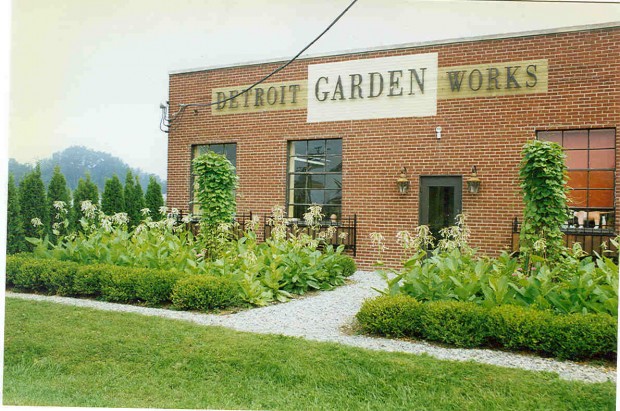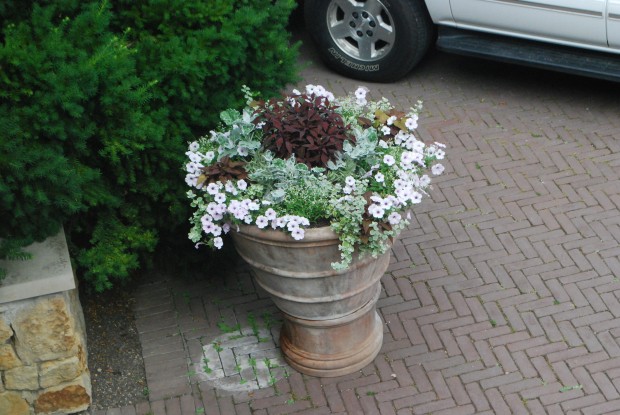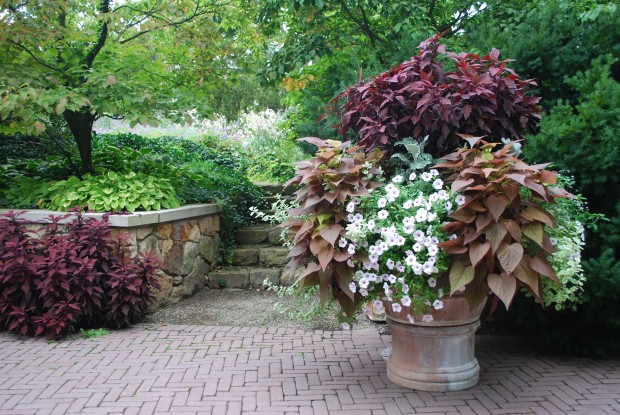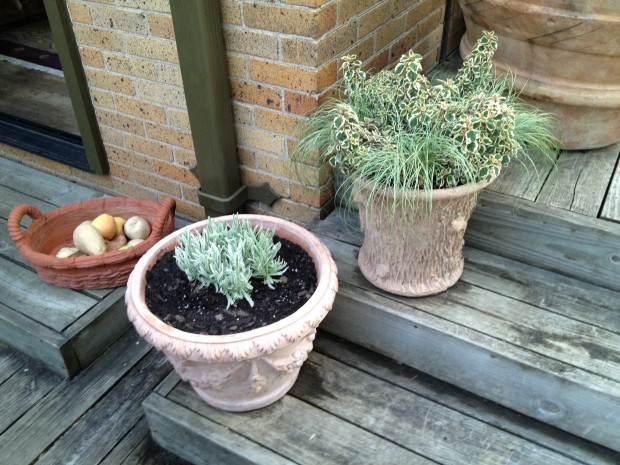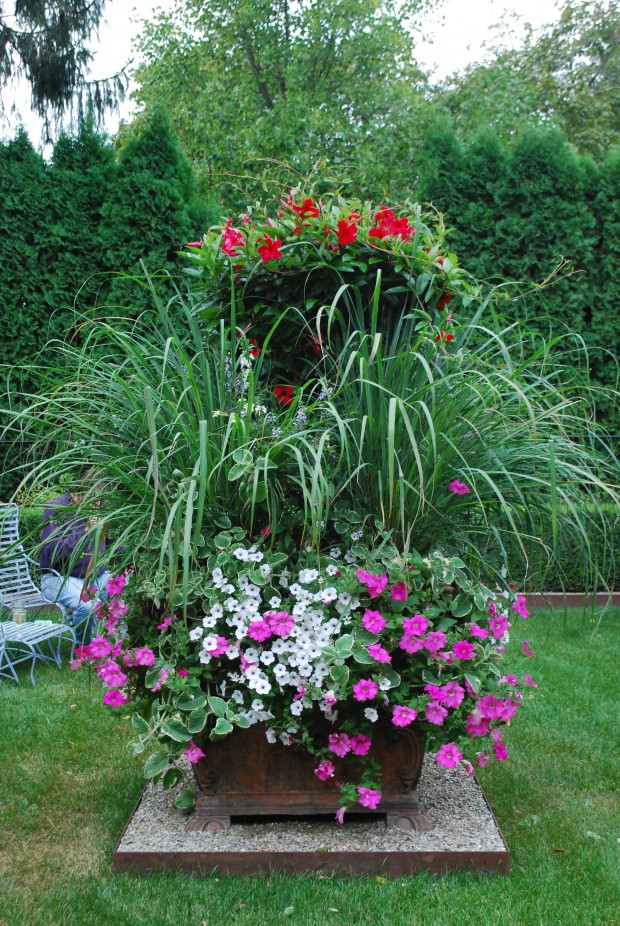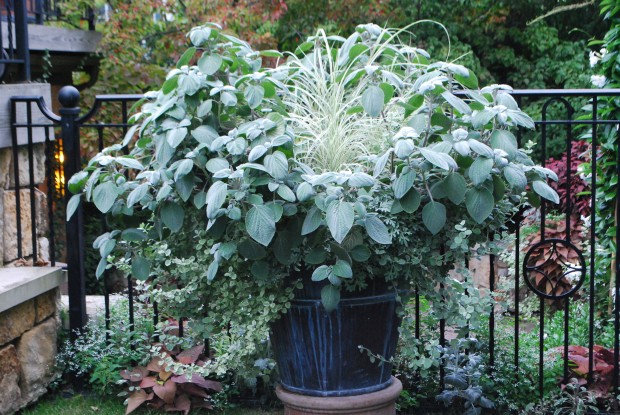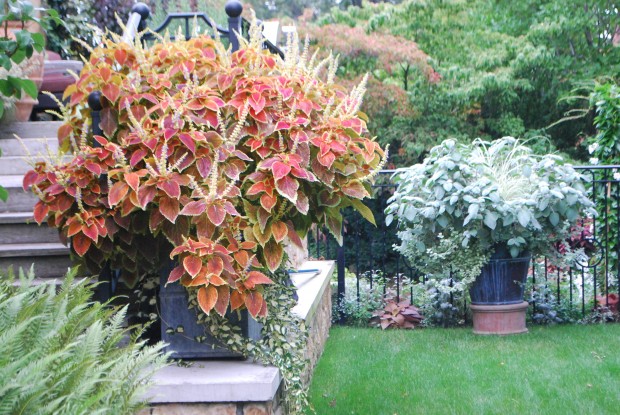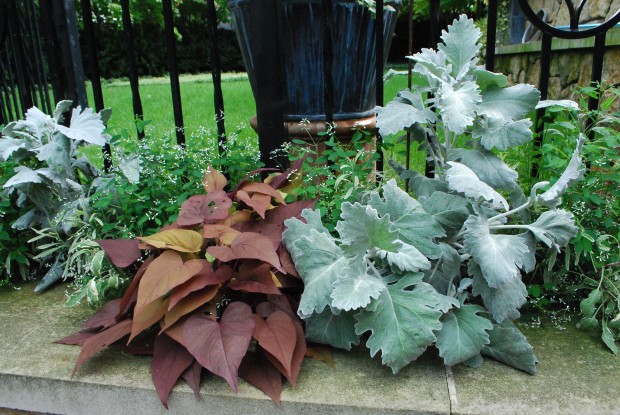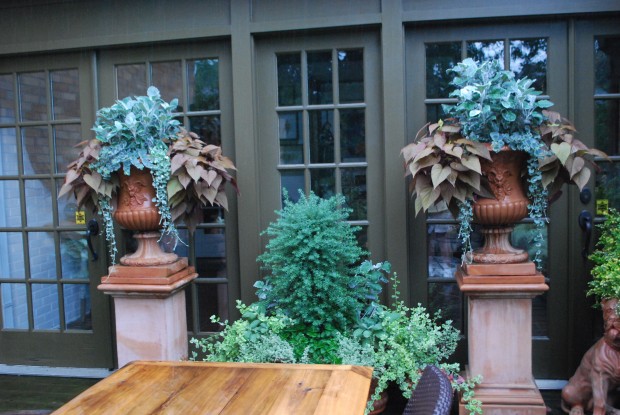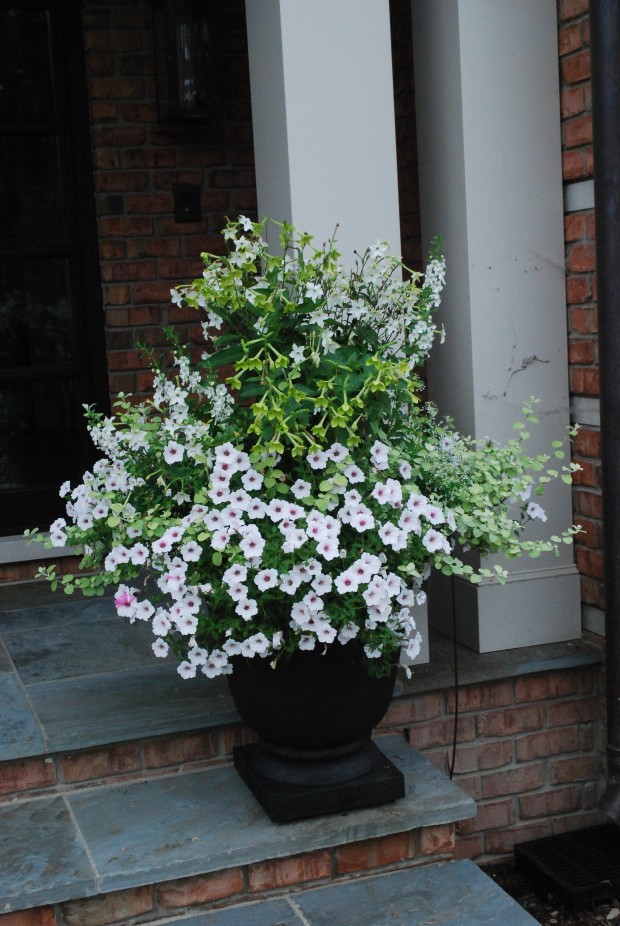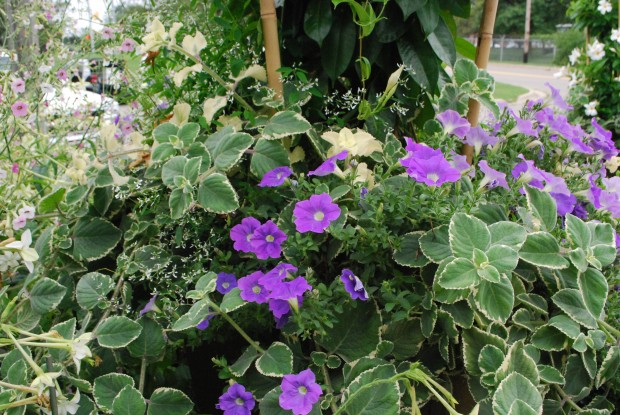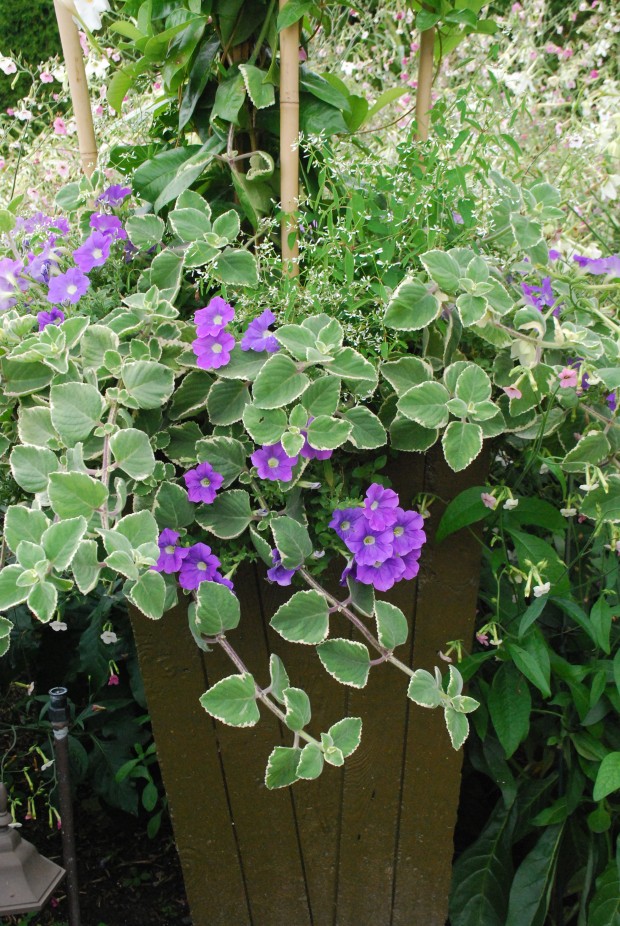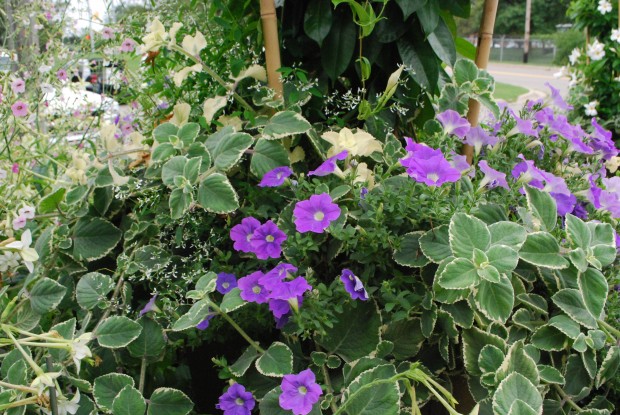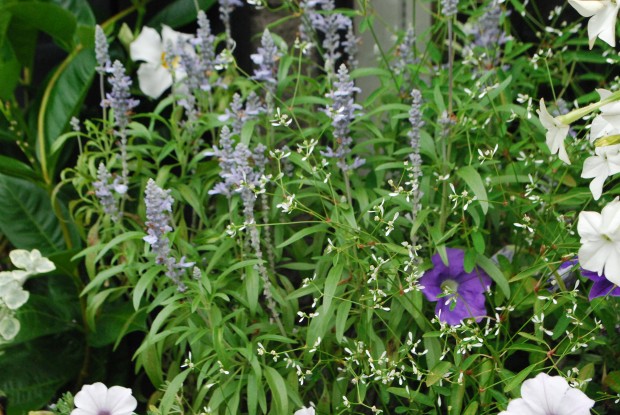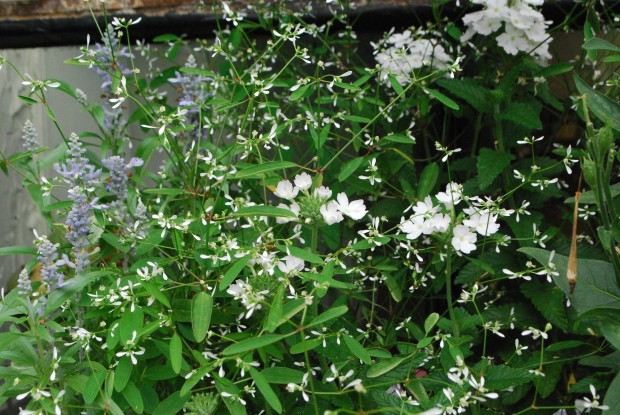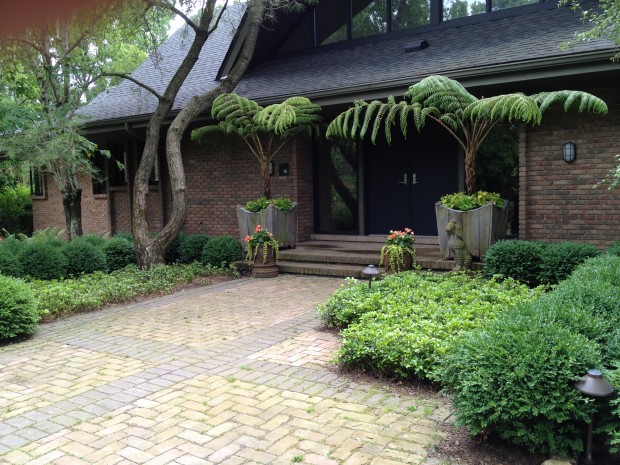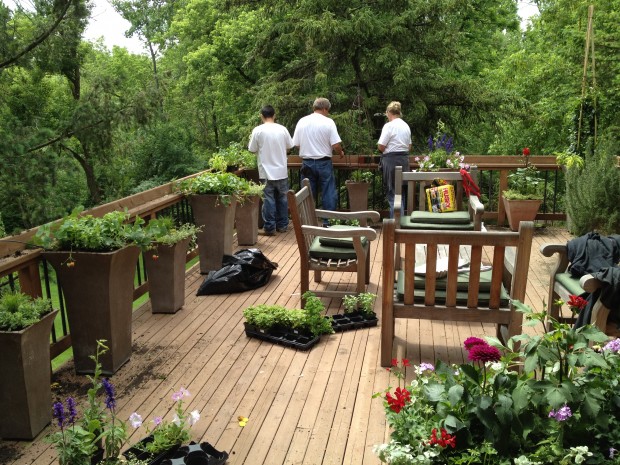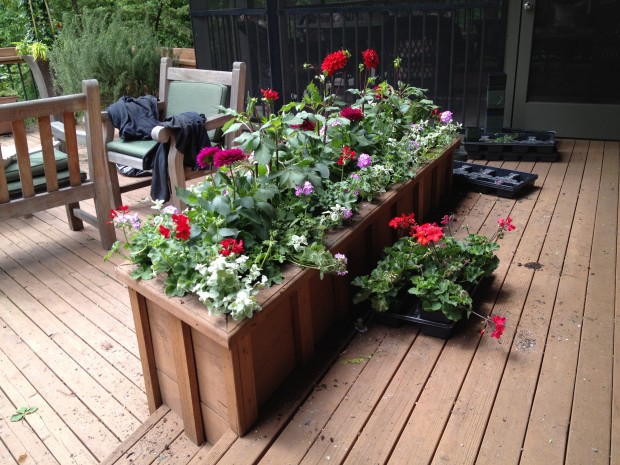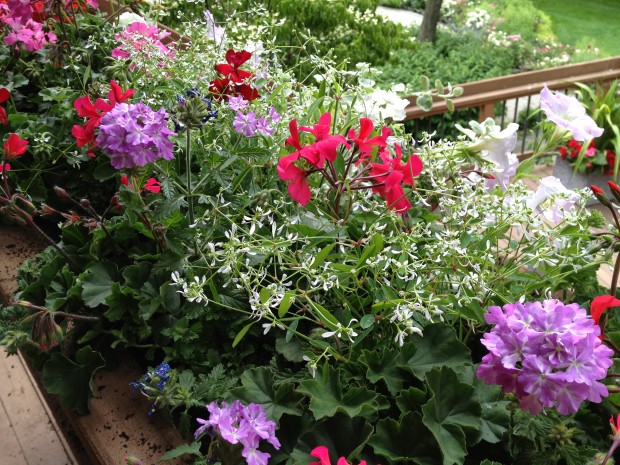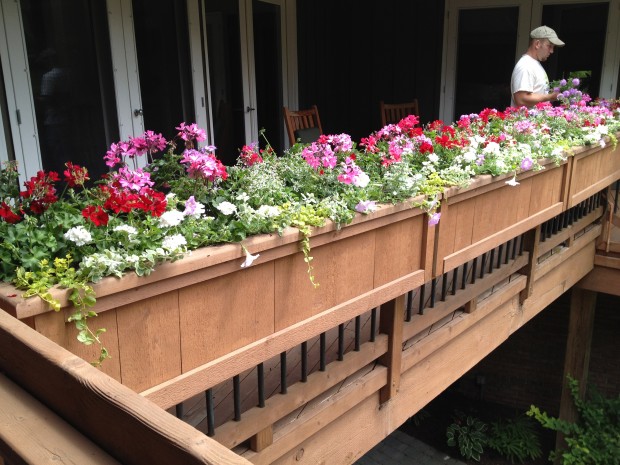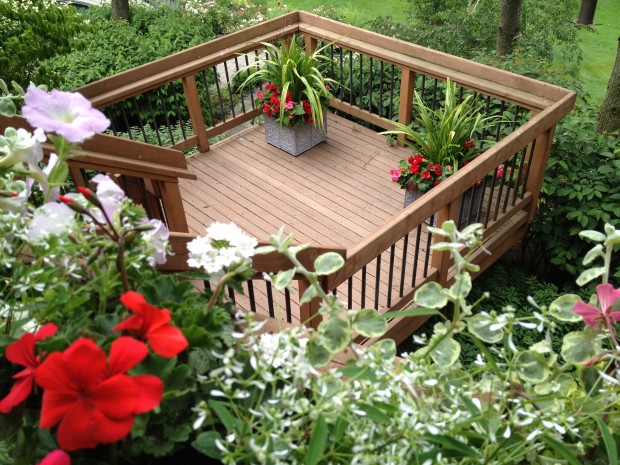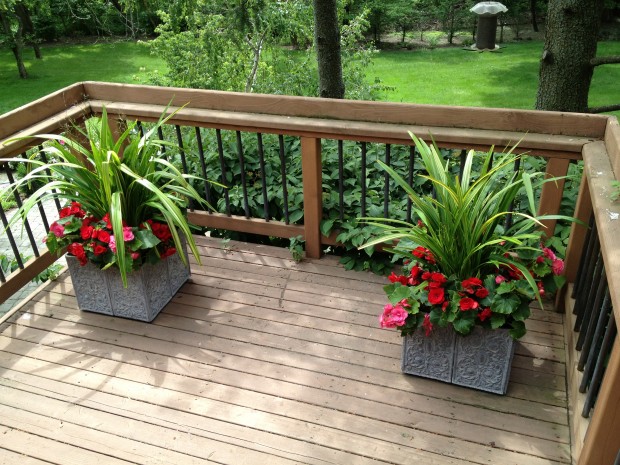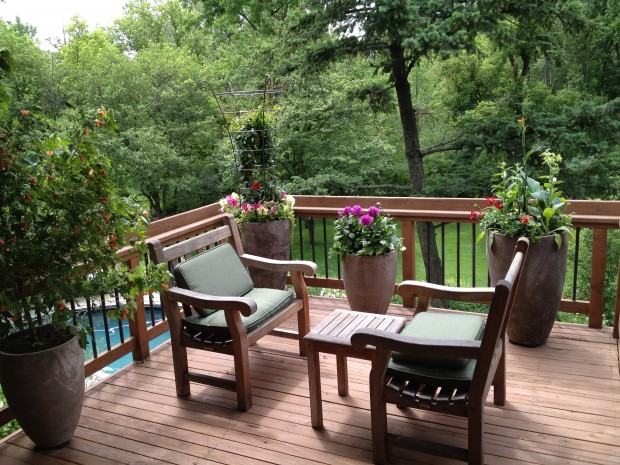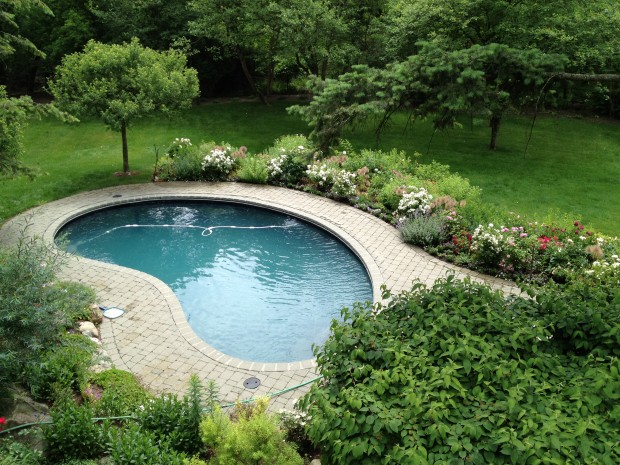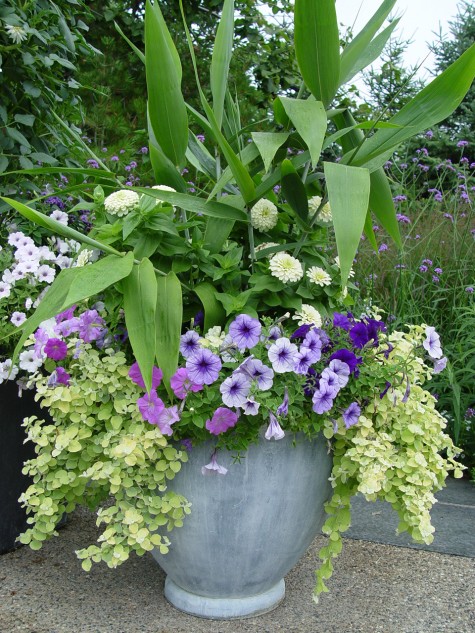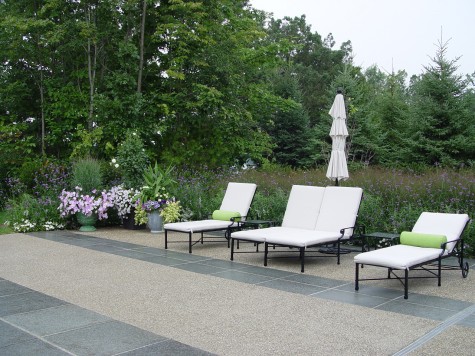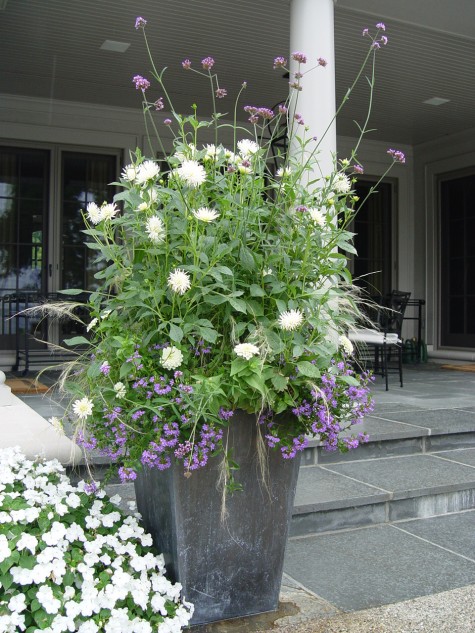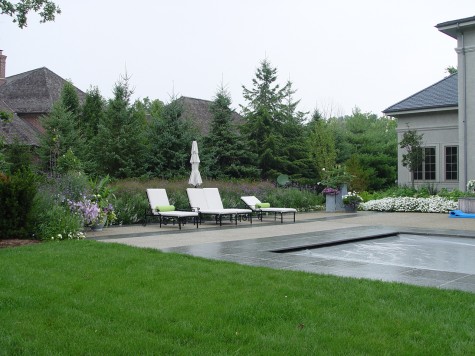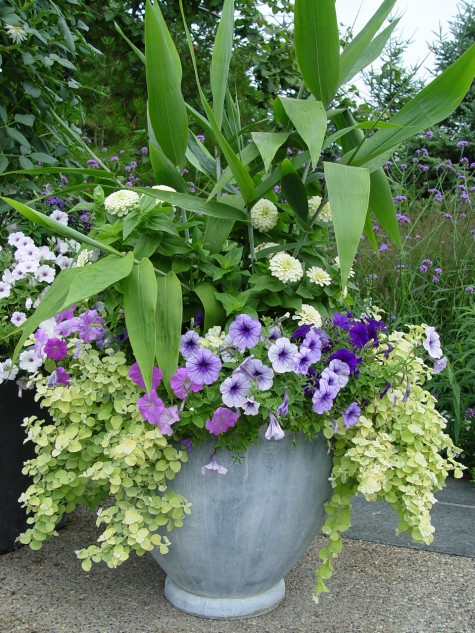In 1996, I had a shop devoted to fine and fabulous objects for the garden- newly opened for business. Of course I had lots of ideas, not the least of which was a scheme for a landscape out front. Gravel paths, and a slew of buxus koreana from Canada. Marv Wiegand gave me 6 months to pay for these boxwood-this was a huge help to a business just underway. This 1997 view of the shop-the word gawky comes to mind.
This past week tells a different, more recent story about the shop garden. The years of work show. Time is a enormously important design element in the landscape. You may be able to cut in line other places , but any landscape needs some age to represent well. Some new landscapes may be charming and bright at first-this is a super nova stage. But how they look fifteen years later tells the design tale. Great landscapes are about the long vision, and faithful maintenance.
Unlike a landscape, annual pots are a celebration of a single season. They start with small plants that take hold slowly-the spring weather in Michigan can be cold and unfriendly to plants native to tropical climates. It seems as though every plant is the same size, no matter whether it will eventually stay small, or grow 6 feet tall. New plantings are almost always out of scale with the container.
This same pot in late September is just about as good as it will get. The fall equinox-tomorrow. Cold nights will have an adverse effect on the coleus and sweet potato vine. But just before the cold weather begins to bring the annual season to a close, the plants seem to take on a robust appearance. Perhaps the cooler weather, or the sun lower in the sky, makes the color appear more saturated.
In any event, the annual season is brief and sweet. It takes no time at all to find out whether an experiment in color and form is satisfying-or not. Better yet, there is a new season ahead-for those containers that need a better idea.
This is my best effort ever in these two small pots. It took years to figure out one simple thing. Large growing plants do not prosper in smaller pots. Plants that mature at a size proportional to the size of the container put on the best show.
I am always pushing that size restriction with these two urns. One year I grew nicotiana mutabilis in them-hilarious, the outcome. Last year’s coleus-much too big a grower for the volume of soil in this pot.
Today the plantings are as lush as they will ever be. That lush look compliments the urns without overpowering them. The succulent in the front never grew large enough to obscure that Italian goat face.
This Tuscan square was vastly larger than its plantings in June. The steel plant climber that keeps the red mandevillea aloft is a major feature.
Yesterday, the lemon grass was every bit of 7 feet wide-all this from 4 4″ pots planted the first week of June. I have taken lots of pictures of all of my pots this summer-I like keeping a record of how they do. But I will not photograph this one again. This is as good as it gets.
3 6″ pots of swallowtail coleus were planted in this pot. It’s a bushel basket full of green and yellow highly textured leaves today.
This pot might be my favorite of the year. The plectranthus is falling over from the weight of its branches. The variegated miscanthus grass in the center is emerging in a way I never anticipated. The community which resulted from my planting is courtesy of mother nature.
I am very much enjoying this moment.
